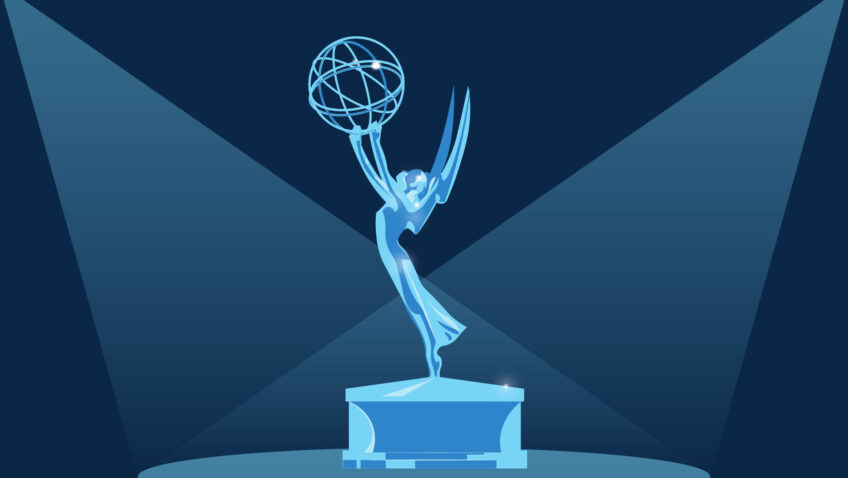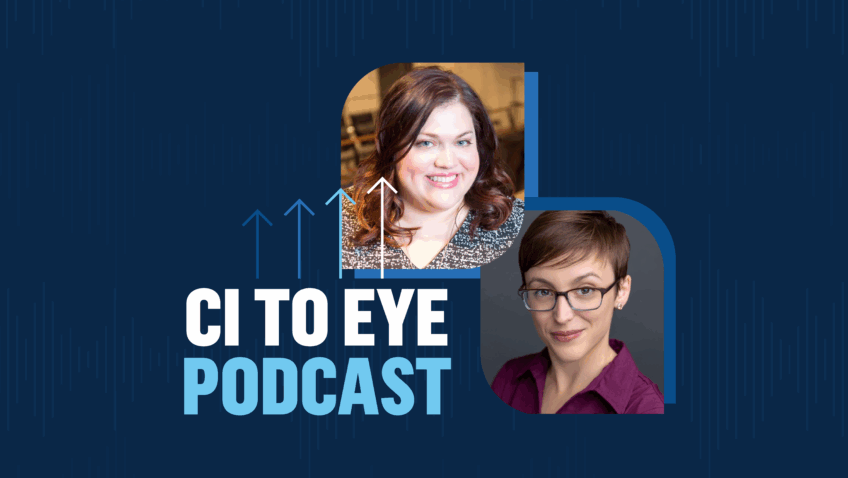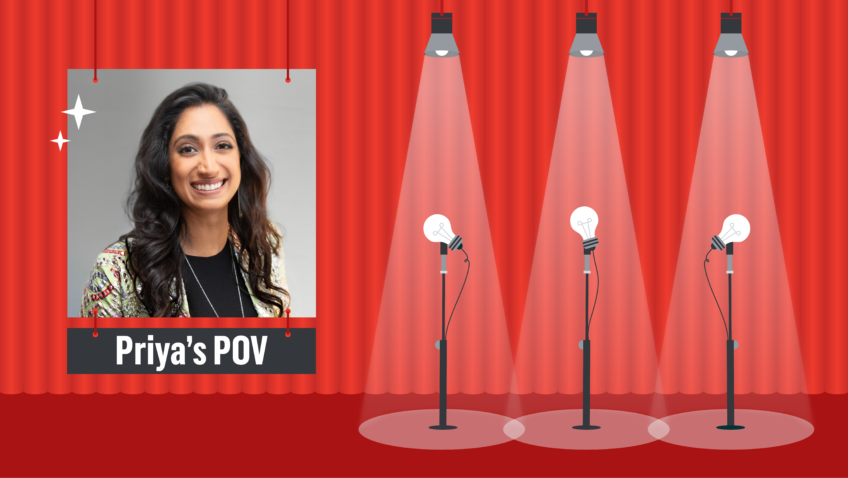Bridging Conversations Between Marketing and Artistic Teams
Picture It! You’re at your desk, staring at your content calendar. It’s Thursday at 4:58pm. You have a looming deadline next week to submit a campaign plan for a brand new show, and the only asset you’ve received is a description that reads “interrogating liminal and ephemeral spaces to elaborate the human experience.” Or you have an amazing photo from rehearsal, but you have no context on how to connect this for new audiences.
It can often feel like marketing and artistic teams are speaking two different languages. I would know. As a former professional dancer with the Louisville Ballet for 11 years (and current freelance choreographer and teacher), now working in digital marketing here at CI, these two worlds are extremely familiar.
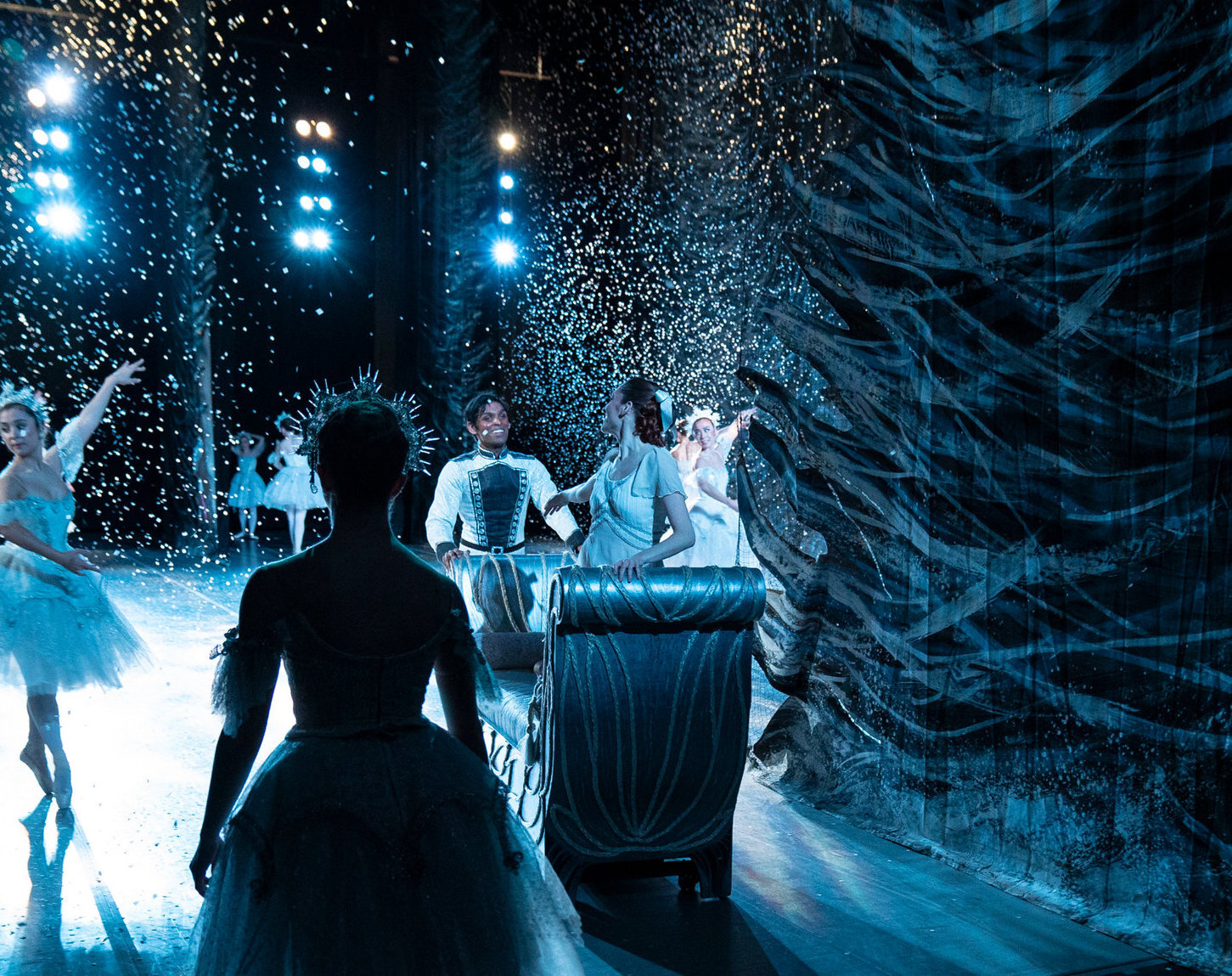
I know the dancer’s disappointment of not seeing our passion reflected in the audience-facing messaging of the organization. I’ve also seen firsthand the marketing team’s impossible juggle: overflowing plates, constantly evolving new works, lack of content, and the relentless pressure to sell tickets. High turnover only exacerbates the problem, turning silos into battlegrounds where communication goes from crossed wires to outright contention.
The painful result? A brand voice that’s either too technical to be understood or too vague to be compelling, leaving audiences confused, alienated, or simply clicking away. So, when everyone’s overloaded, how do we build a shared language that genuinely invites curious audiences to buy tickets?
Creating a Safe Space, Face-to-Face
Think of the rehearsal studio. For me, it’s a safe space to try new things, fail, and explore new options that work better. Everyone comes in with the understanding that we are trying to complete the vision of the director in a way that is both physically possible and aesthetically pleasing. Those who are successful in this process work from the premise that feedback is for the benefit of the product and not a personal attack.
This doesn’t have to be reserved for rehearsal spaces – creating a safe space for experimentation and possible failure is a fundamental principle we must replicate when building a healthy relationship between marketing and artistic teams.
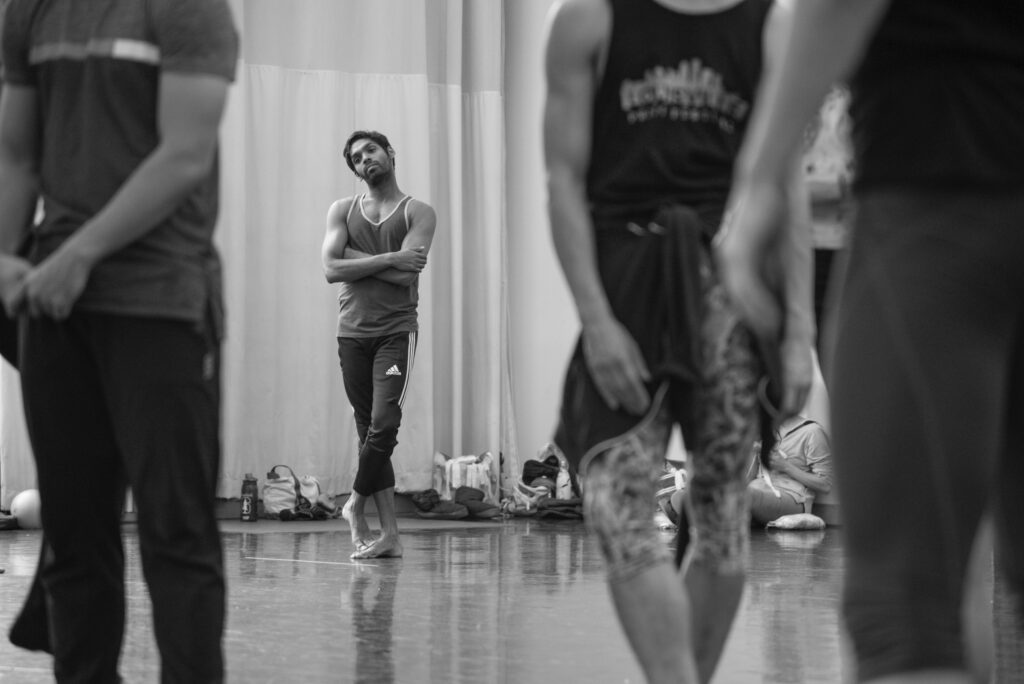
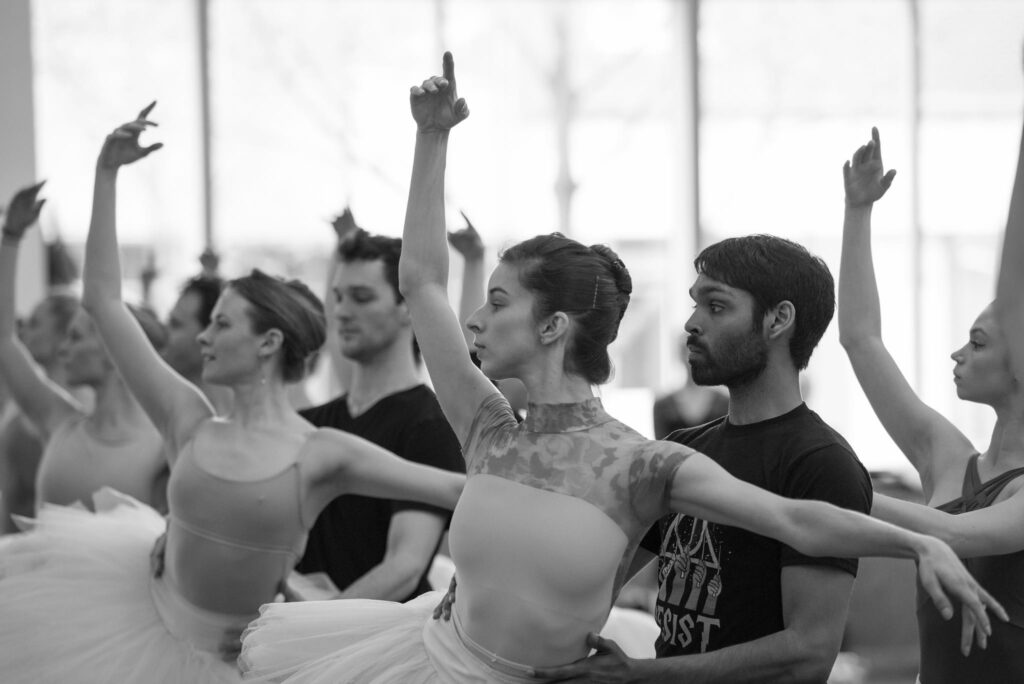
Create a Value Statement
Before meeting, it is important to make sure all teams are on the same page, and this can be achieved easily by a value statement. It may sound cheesy, but a value statement can serve as an appropriate reminder that all stakeholders are coming in with the hope of achieving the same outcome.
There are a lot of goals to juggle, so it’s key to identify which is more of a priority for the organization: displaying high-quality art, accessible messaging, getting butts in seats, ticket revenue?
Everyone should have a clear understanding of the consequences when one of those priorities is sacrificed and how that affects the brand/organization
If accessible language is sacrificed…new patrons are alienated and there is a risk of the organization not being sustainable.- If an unapproved image is shown…the artistic authority is lost as well as trust of the artists and future collaborators/investors.
A shared list of values then makes it easy when new members rotate in, because they have a clear understanding of the standards and know how to appropriately contribute to it.
Here’s an example of a value statement: “Connecting Artistry with Audience: Our shared mission is to bridge the gap between exceptional artistry and curious audiences, ensuring ballet’s transformative power is experienced by all. By fostering mutual understanding and collaboration, we will cultivate a vibrant, sustainable future for our art form.”
Make Feedback a Routine
No one wants another meeting added to the calendar, but the time spent on communicating directly saves time spent on miscommunications and tensions that could lead to turnover. Whenever possible, we want to have these conversations face-to-face and not behind emails, where tone and empathy can easily get lost.
Once that recurring meeting is established and a value statement is created, it is important to enter that safe space and leave your ego at the door. Invite the possibility that each person at the table doesn’t have all the answers and needs to learn something new. The goal is to create an environment where feedback is an opportunity to see a perspective that hasn’t been considered.
As a dancer, I have been trained (perhaps even brainwashed) into thinking no feedback is a bad thing, as it means people aren’t interested in your career growth. Just like artists do in rehearsal, these meetings can be filled with creative exploration, vulnerability, and sharing of viewpoints to collectively learn about the art and invite that same curiosity and exploration from audience members.
Talk About the Art
Whether you have spent decades in the art form, or this is your first year as a marketer, we all represent different levels of awareness that audiences have to the art itself. It’s important to lay those perspectives out on the table, and meet somewhere in the middle to create a language that is accessible and educational for the core messaging on the landing page vs. the program/brochure vs. a social media post.
You can start by encouraging the artistic team to talk more about the work. The ability to talk about art with the average patron is a muscle that artists don’t often get to exercise. As a dancer, my primary language of expression and communication is movement. If I were good at writing or talking, I’d be a writer or speaker. Just as the marketing team might be intimidated about knowing enough about the work, the artistic team might be intimidated in knowing how to communicate about it. They know the art is good and worth seeing, but may need some assistance in creating a narrative that everyone will relate to.
Your Guide to Unlocking the Artistic Narrative
You, the marketer, are a master communicator. You understand audience segments, messaging frameworks, and the art of the hook. Your role here isn’t to teach them marketing, but to partner with them to translate their artistic passion into language that resonates. How? By asking the right questions – and truly listening.
- Establish a Baseline: Share what you (an average curious patron) know about the work. You can do this before or after the artistic team has shared, but this is your opportunity to establish a baseline of our audience and what knowledge gaps our teams have to fill when communicating and marketing the show.
- Tap into the Passion: Ask them what they love about the work and their motivations for selecting it for the program. This will help create the personal and passionate narrative from which we will break down and rebuild the messaging for various audience segments.
- Brainstorm for Every Audience: Encourage them to describe this work to their best friend, a parent, a child, etc. By doing this, you are encouraging a brainstorm of different messaging that can be applied to various audiences.
- Uncover the “Why” Factor: Ask them, “Why should I care about the work?” “Why should the average person leave their homes for this?” Our competition for purchases is different in the arts world than it is when selling a good. We aren’t just competing against other events or the economy, we are also competing with the couch. By focusing on why the average person should care enough to leave the house, it puts that competition into perspective, and gets us to dig deeper into messaging that will hook the audience.
Put Your Work into Action
Informed vs Curious Audiences: As you craft the artistic narrative, you’re going to learn a lot about the work, general overarching ideas about the show, and deep dives into the technical elements/history. That is a lot of information to take in, and we can’t expect audiences to absorb all of it.
That said, there is an audience and place for all of the messaging and discussions, and AI can help synthesize or extrapolate talking points and then sort where they go. Is it in the ad copy, on your landing page, in a promotional video, on a blog post/podcast, or in the program notes? You’ll just want to be clear in the writing tone that audiences don’t need to have read anything to enjoy the show.
A prerequisite that you need to come in with knowledge of the artwork creates a culture of intimidation and elitism, which continues to plague the classical arts. We want to create a landscape of touchpoints for curious audiences to learn if they so desire, but feel like they can also embrace the unknown. Curious audiences are comfortable not having all of the answers, and that means the artistic team can be more innovative in their programming decisions.
Data: The Universal Language of Impact
Now that we have all of this information, how do we prove the impact it’s having on audiences? As a marketer, I’ve learned that one of our greatest superpowers is data. Data can’t be argued with, and is a great way to break silos in an organization. As you try new approaches, different language, and create more touch points, don’t be afraid to use data to show how these strategies are working. A/B testing is a great feature to explore a new approach that doesn’t sacrifice your media spend and the work that needs to be done to sell a show.
GA4 will allow you to see how patrons are engaging with your website and purchase paths, as well as what touch points are resonating. Ad performance KPIs can highlight which messaging/content type is resonating for which audiences. All this data is going to be just as valuable as an audience feedback survey, because behind every data point is a patron or potential patron. Just like art, data can be used as a tool for empathy and connection.
Planning for the Future
Once a relationship with the artistic team is established, it’ll make it easier to have those season-focused conversations. You will be more equipped to ask the artistic team what their programming intention is but they will also feel emboldened to ask you about the strategies you are using (and you have data to back up those strategies!). That feedback doesn’t have to be reserved to the artistic team. You can invite feedback from everyone in the organization to see what resonates with various types of people.
At the end of the day we all want to showcase artistic excellence and have butts in seats. By reducing factors of intimidation, creating more touch points, and embracing curiosity over expertise, we can bridge the divide. We can transform confusion into connection, a mission that reflects that of the artwork.
Who else does marketing work closely with, occasionally with some friction? The development department! Don’t miss this inspiring conversation between Cincinnati Shakespeare Company’s Director of Marketing, Jeanna Vella, and Director of Development, Sara Clark, who share what happens when we break down silos and create true cross-departmental partnerships.


